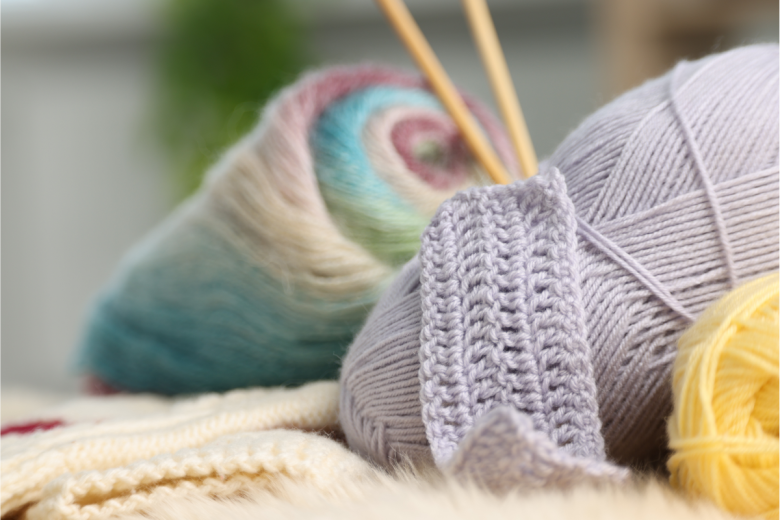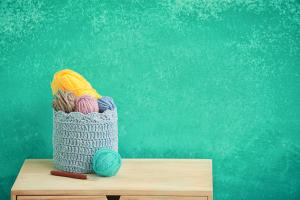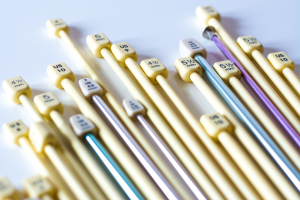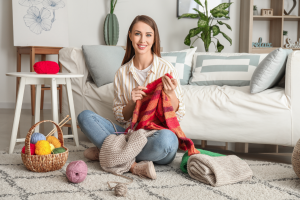Knitting is a satisfying craft, but if you’ve ever encountered frustrating results with your knitting projects, you’re not alone. One common reason for these issues is skipping a critical step: the knitting sample. A knitting sample is an essential tool to ensure your project turns out just as you imagine. In this article, we’ll dive into what a knitting sample is for, how to make it correctly, and why it’s a game-changer in your knitting projects.
Knitting can be a joyful and creative activity, but achieving the perfect outcome often requires more than just following a pattern. Many knitters, especially beginners, may rush into a project without realizing the importance of a small but powerful step: creating a knitting sample. This seemingly simple task can save you from headaches down the road by ensuring that your gauge, stitch count, and tension are on point.
Whether you’re working on a sweater, scarf, or intricate lace shawl, the knitting sample serves as a test run that helps you determine if your stitches match the pattern’s requirements. Without this crucial step, you risk ending up with a piece that’s too big, too small, or simply not what you envisioned. In the following sections, we’ll explore why taking the time to make a knitting sample is key to creating successful, well-fitting projects and how it can improve the overall knitting experience.
The Importance of a Knitting Sample
You might be wondering, “Why is it so important to make a knitting sample?” Simply put, it ensures that you’re on the right track. A knitting sample, also known as a gauge swatch, helps you confirm that your yarn, needle size, and stitch pattern will create the correct fabric for your intended project. Without this sample, your finished product could end up too big, too small, or not the right texture, which could lead to frustration and disappointment.
Knitting Samples in the Crafting World
In the world of knitting, making a sample is not just a recommended practice; it’s considered essential by experienced knitters and designers alike. Whether you’re following a pattern or creating your own design, knitting a sample gives you the confidence that your project will come out perfectly.
Why You Should Make a Knitting Sample
Before you dive into your big knitting project, think of the sample as a dress rehearsal. A knitting sample ensures you get the correct size and fit, avoids unnecessary yarn wastage, and helps you catch mistakes before they become a big issue.
Achieving the Right Fit and Gauge
Perhaps the most critical reason for knitting a sample is gauge. Gauge refers to the number of stitches and rows per inch that you’re able to achieve with your chosen yarn and needles. The gauge is crucial for ensuring your final project matches the intended dimensions. By making a knitting sample, you can ensure that your stitches per inch match the pattern’s requirements.
Avoiding Common Knitting Mistakes
Making a sample also helps you avoid common knitting mistakes, such as selecting the wrong yarn or needles. It gives you a chance to adjust your tension and make sure that the stitch pattern looks right. Without this small but important test, you might end up with an entire project that’s too tight, too loose, or just plain off.
Materials and Tools You Need
Before you begin, gathering the proper materials is key to making a successful knitting sample.
Choosing the Right Yarn for Your Sample
Selecting the right yarn is crucial for achieving the desired outcome in your project. Always use the same yarn specified in your pattern for your sample to get an accurate reading. If you are substituting yarn, make sure it matches the thickness or weight of the original yarn to avoid discrepancies in your final piece.
Essential Knitting Tools for a Perfect Sample
Besides yarn, the other essential tools include your knitting needles and measuring tape. Choosing the right needle size according to the pattern is just as important as selecting the yarn. A good measuring tape is also indispensable for checking your gauge.
How to Create a Knitting Sample Step-by-Step
Now that you’ve gathered your materials, it’s time to create your knitting sample. Follow these easy steps to ensure your sample turns out just right.
Measuring Your Yarn and Needles
Start by measuring out the required length of yarn. Check the pattern for the gauge details, and match your needle size accordingly. Don’t forget to relax your hands and have a comfortable knitting environment. This will help you maintain consistent tension throughout your sample.
Casting On and Knitting the Sample
For most projects, you’ll need to cast on a few more stitches than you think you need—about 4-5 extra stitches on either side of the pattern’s stitch count. This extra will give you room to measure accurately. Now, follow the pattern and knit until you’ve completed a few inches of fabric.
Understanding Gauge Swatches and Their Role
Once you’ve finished knitting the sample, it’s time to check the gauge. Lay your work flat and use your measuring tape to count how many stitches fit into a 4-inch square. This is your gauge! If it doesn’t match the pattern, you’ll need to adjust your needle size or yarn choice.
How to Check Your Sample’s Correctness
Once you measure your sample, check for both stitch count and row count. If your measurements are off, don’t panic. You can adjust by changing your needle size or switching yarn. Make another swatch until it matches the required gauge.
Troubleshooting Common Knitting Sample Issues
Even if you follow the steps carefully, you may encounter some issues with your knitting sample. Here’s how to troubleshoot common problems.
Adjusting Your Gauge
If your stitches are too tight or too loose, it’s time to adjust. Use a larger needle if your stitches are too tight, or a smaller needle if they’re too loose. This will help you achieve the correct gauge.
Identifying Tension Problems
Tension issues can arise due to stress, excitement, or how you hold your yarn. If your tension is inconsistent, try relaxing your hands and focus on uniform stitch size.
How to Fix Incorrect Stitches in Your Sample
Sometimes, a mistake in the sample isn’t related to your gauge but to your stitches. If you notice errors like dropped stitches or incorrect stitch types, rip back and rework the section. This will help you achieve the perfect sample.
How to Use Your Knitting Sample in Your Projects
Once your knitting sample is perfect, it’s time to incorporate it into your projects.
Incorporating the Sample into Your Design
By now, you should have a good idea of how your yarn and needles will behave. Incorporate your sample into your design by ensuring that the stitches per inch match the pattern’s requirements. This guarantees that your final project will turn out as expected.
Making Adjustments Based on Your Sample’s Outcome
If your sample shows that the project won’t fit as planned, adjust the number of stitches or rows based on your swatch’s gauge. Don’t be afraid to make changes to get the perfect fit.
The Value of a Knitting Sample in Your Crafting Journey
Making a knitting sample might seem like an extra step, but it’s an investment in your knitting success. Whether you’re making a sweater, scarf, or blanket, a knitting sample helps you achieve the correct fit, avoid mistakes, and perfect your technique. Take your time to knit a proper sample, and you’ll save yourself the heartache of knitting an entire project that doesn’t work.
Beyond just ensuring the right fit, knitting a sample also provides an opportunity to test your yarn choice, needle size, and gauge. These elements can dramatically affect the outcome of your project, and without checking them beforehand, you risk wasting valuable materials. A sample also helps you familiarize yourself with the stitch patterns, so you can identify any tricky sections before they become frustrating.
In addition to technical benefits, a knitting sample allows you to practice and improve your skills. By testing new techniques in a small, manageable format, you can boost your confidence and reduce the likelihood of errors later in your project. It’s also a great way to experiment with different textures, colors, and combinations to see what works best for your vision.
Ultimately, a knitting sample serves as a blueprint for success. It may take some extra time, but the assurance it provides is invaluable. Whether you’re a beginner or an experienced knitter, creating a sample ensures that your final project turns out just as you imagined. It’s a small step that makes a big difference in the overall crafting process.




